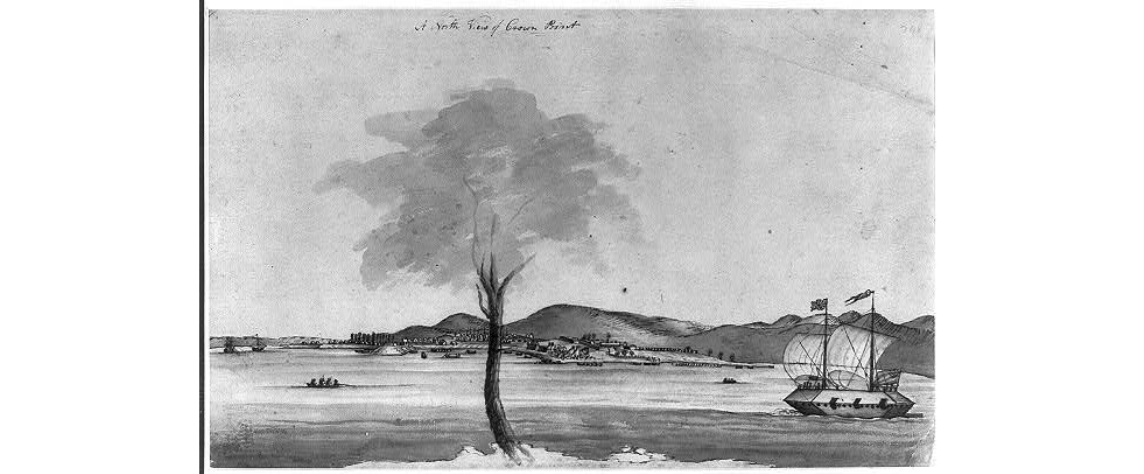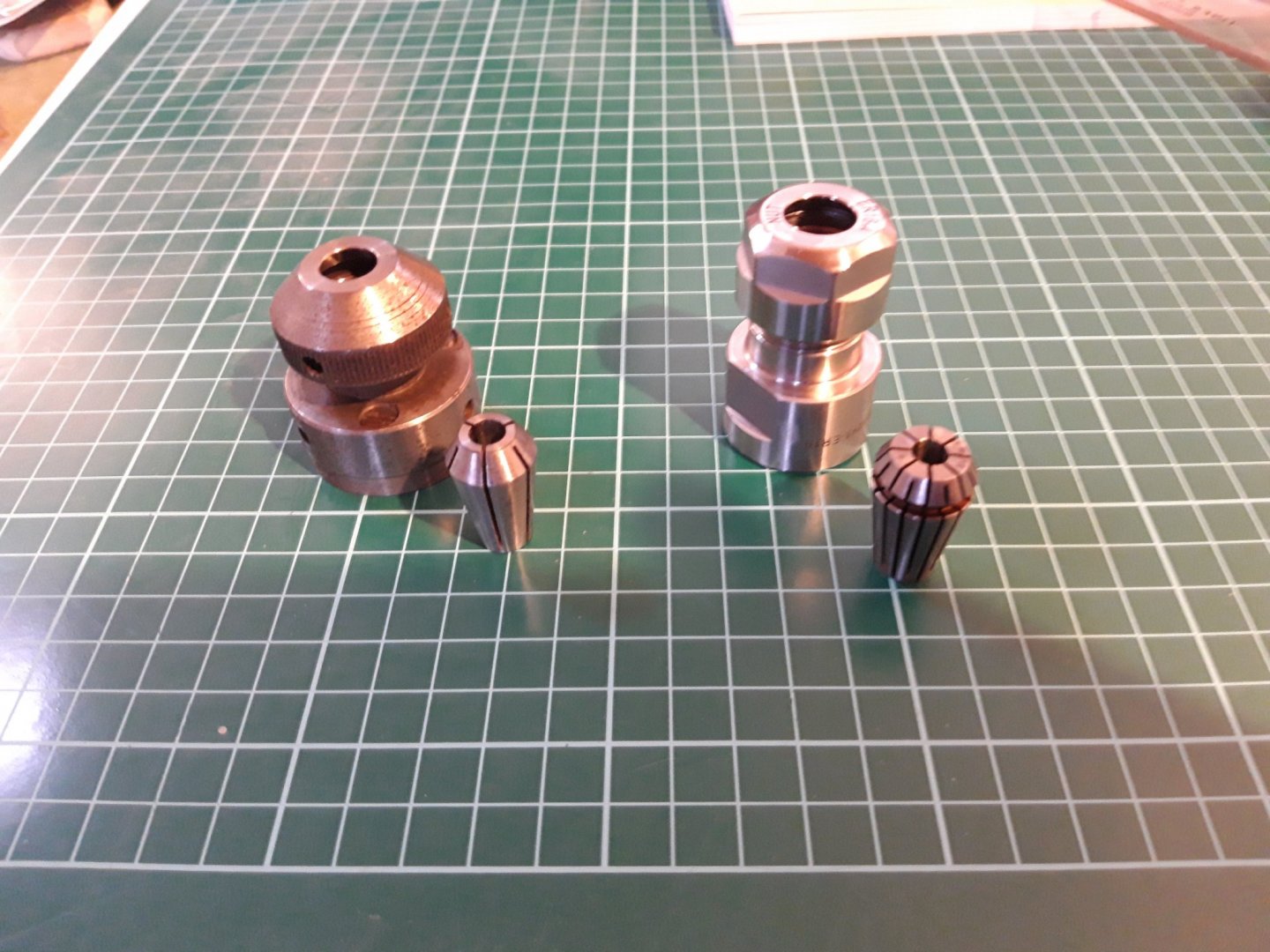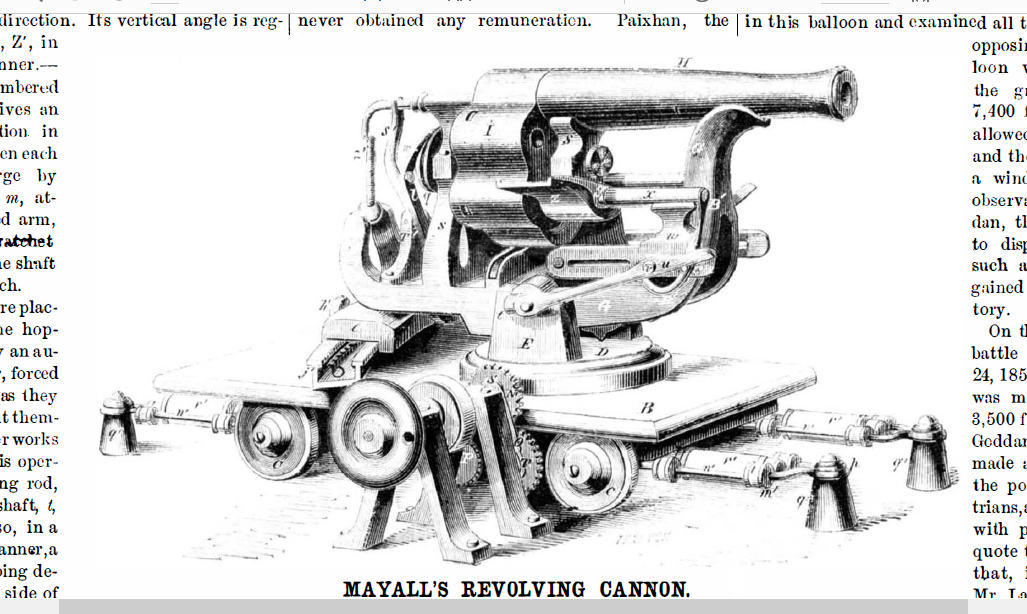-
Posts
3,014 -
Joined
-
Last visited
Content Type
Profiles
Forums
Gallery
Events
Everything posted by bruce d
-
Thanks guys, much appreciated.
-
Found this image in the Library of Congress online: The description says 'Drawing shows a British gunboat under sail on Lake Champlain with a view of Crown Point, New York in the background. ' It is dated circa 1759. Any ideas about the identity or class of the 'British gunboat'?
-

Mini Lathe recommendations?
bruce d replied to jfinan's topic in Modeling tools and Workshop Equipment
Thank you, exactly the way the nice people at UNIMAT had in mind. I have made a cannon or two using the headstock adjustment and would not think anything more ambitious should be attempted without support. You are right Bob, of course, and I hope nobody believed I was saying they could turn masts in this fashion. The very first thing I made on a Unimat SL was a torpedo. I did the warhead end freehand and used the headstock adjustment for the tapering aft section. Worked like a charm and I felt like a master craftsman.. -

Mini Lathe recommendations?
bruce d replied to jfinan's topic in Modeling tools and Workshop Equipment
Unimat original collet chuck for the SL on the left with E16 collet, aftermarket ditto on right with ER16. -

Mini Lathe recommendations?
bruce d replied to jfinan's topic in Modeling tools and Workshop Equipment
Outrageous. Like finding the end of the rainbow. -

Mini Lathe recommendations?
bruce d replied to jfinan's topic in Modeling tools and Workshop Equipment
Shipman, You have recieved good advice above but I expect that to get started you should just focus on learning to use what you have. Unimats are far more common in the UK market than the Sherline tool and there are many bits available here at (I am glad to say) lower prices than the same item in the US. As you are making model ships and not watches, I suggest to concentrate on the SL. Unlike the UNIMAT 3 it has a built-in taper turning facility by adjusting the angle of the headstock. I assume you have a three jaw chuck. Sharp tools are more important than correct speed. Take your time. Experiment with some round brass bar until you can get a smooth finish. Make a couple of cannons. See for yourself what happens if you use a rounded tool shape instead of a pointed tool. Now repeat the exercise with some hardwood, of course with appropriate tooling. Don't get a sleeve anywhere near the lathe. Wear eye protection. Best advice: find out if you like using the lathe. If not, well .... good thing to learn before stocking up with must-have tools and accessories. Quite right. There are screw on collet holders for the SL and U3 and the original factory pieces used E16 double angle collets which are no longer produced. ER16 collets will usually work in the Unimat E16 collet chuck and readily available, however there are some very poor quality pieces out there so tread carefully. If you go forward it may be worth getting collets but get to know how useful (or not) having a lathe is first. HTH Bruce EDIT: CROSS POSTED, YOU HAVE MADE PROGRESS ALREADY. The book you have is the best starting point I know. Have fun. -
Looks amazing but I can't make the link work. VERY good choice of subject!
- 216 replies
-
- masterkorabel
- ships
-
(and 3 more)
Tagged with:
-
Found this in an 1861 Scientific American: Yes, it is a cannon revolver. The patent was granted in 1860 and it was intended for fixed batteries or shipboard use. As far as I know it wasn't put into production, but I don't know. Please tell me it was never mounted on a ship. Bruce
-

Ship lettering
bruce d replied to rlundy90's topic in Painting, finishing and weathering products and techniques
Old stock of Letraset is dwindling. Try these people: https://www.mayfairstationers.co.uk/office-supplies/letraset-dry-transfers.html HTH Bruce -
She certainly had copper by 1778. From an entry in NMM Caird Library: 'Propose that the Triton may be ordered to be refitted and sheathed with copper at Chatham instead of Sheerness.' This sounds like a first installation of copper but is not conclusive. Typical wording in these letters for replacing copper would be more direct, such as 'strip and sheath with new copper.
-
A warm welcome to MSW from Sussex. Do you have a warm place to work on your model?
-

Gun Spile
bruce d replied to Mark Allen's topic in Discussion for a Ship's Deck Furniture, Guns, boats and other Fittings
The only purpose I can imagine for the metal additions (and the clue is in their name) would be if the ship or battery had a device, like a rail, for traversing a gun that was not always in use. To explain: a gun fitted with the discreet traversing plates could be wheeled around on the otherwise standard trucked carriage and used in the normal way, OR it could be backed onto a rail, possibly circular, and trained in that way. My reasoning is that I can't quite see how the gun could need the traversing plates if it was in use as a free-standing traditional trucked piece, and would not need the trucks if it was always in use in a position served by a traversing rail. Some armed boats (ships' boats) had crude traversing rigs and only shipped the cannon/carronade when needed so it would make sense to have a modest alteration to the carriage for the purpose. Do you have a date for the very useful illustration in post #17? -
Hello John, welcome to MSW. It is a great place. Bruce
-
Toni, I am enjoying the thread and am grateful for your descriptive powers. I decided to see your entire build before starting mine. Now my inexperience is going to be revealed. The instructions are to glue the keel etc to the plans, but I don't see any mention of releasing the finished model from the paper at the end. Have I missed it? I imagine I am not the only builder who wants to mount the finished half-hull for display. Any suggestions for a particular adhesive that will let the plan peel away when the time is right? I'm not keen on using IPA to attack the glue along the entire length of the keel but perhaps I am being timid? Thanks again for what is, in my opinion, an inspired project. Bruce
-
It is very handy for that. I believe this is mentioned as the reason behind the project in one of the reviews of the book. I put it to the test when looking at an undated drawing of an armed launch and found that using the book I could narrow it down to a 19th century boat, not the late 18th I was hoping for. HTH Bruce
About us
Modelshipworld - Advancing Ship Modeling through Research
SSL Secured
Your security is important for us so this Website is SSL-Secured
NRG Mailing Address
Nautical Research Guild
237 South Lincoln Street
Westmont IL, 60559-1917
Model Ship World ® and the MSW logo are Registered Trademarks, and belong to the Nautical Research Guild (United States Patent and Trademark Office: No. 6,929,264 & No. 6,929,274, registered Dec. 20, 2022)
Helpful Links
About the NRG
If you enjoy building ship models that are historically accurate as well as beautiful, then The Nautical Research Guild (NRG) is just right for you.
The Guild is a non-profit educational organization whose mission is to “Advance Ship Modeling Through Research”. We provide support to our members in their efforts to raise the quality of their model ships.
The Nautical Research Guild has published our world-renowned quarterly magazine, The Nautical Research Journal, since 1955. The pages of the Journal are full of articles by accomplished ship modelers who show you how they create those exquisite details on their models, and by maritime historians who show you the correct details to build. The Journal is available in both print and digital editions. Go to the NRG web site (www.thenrg.org) to download a complimentary digital copy of the Journal. The NRG also publishes plan sets, books and compilations of back issues of the Journal and the former Ships in Scale and Model Ship Builder magazines.




